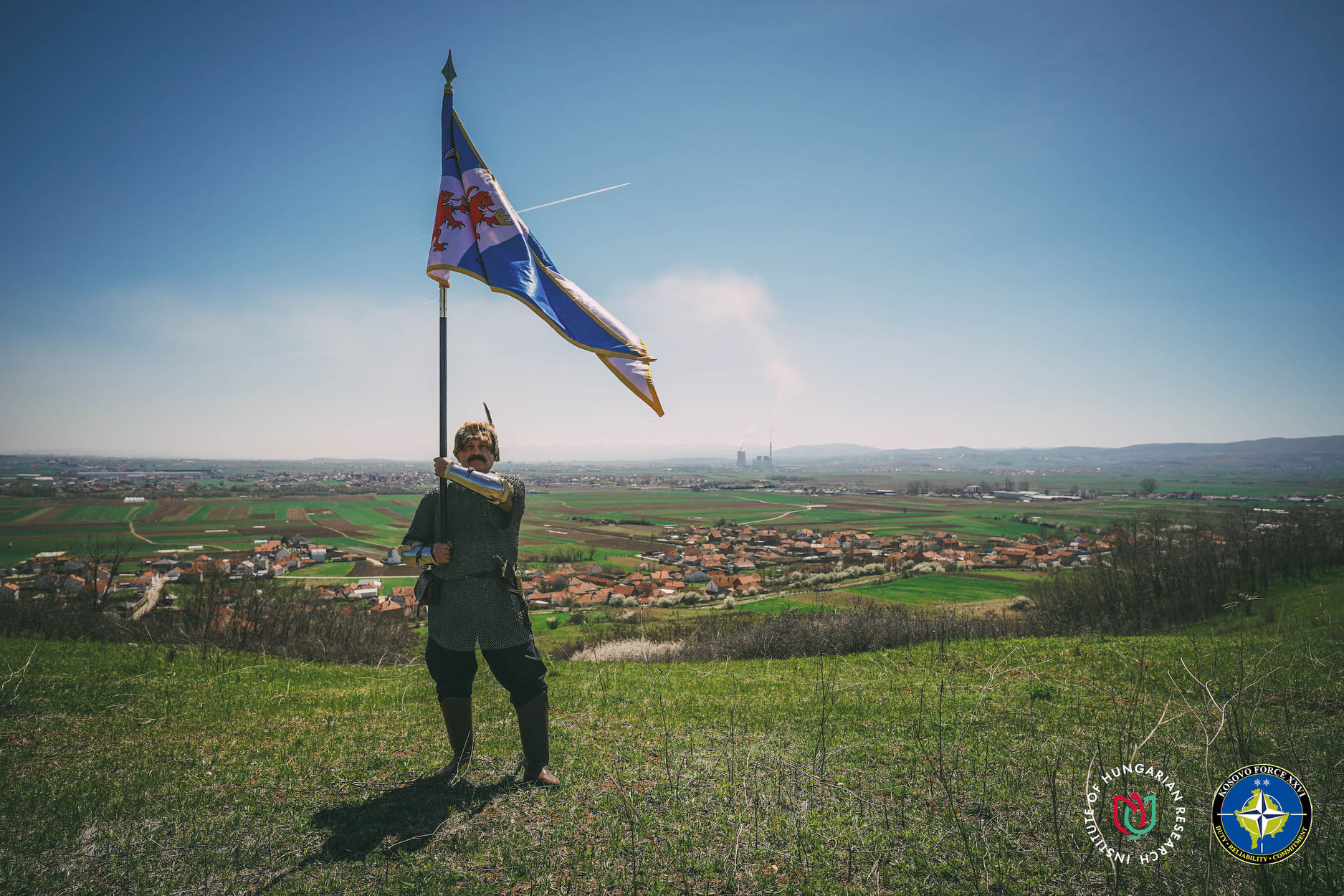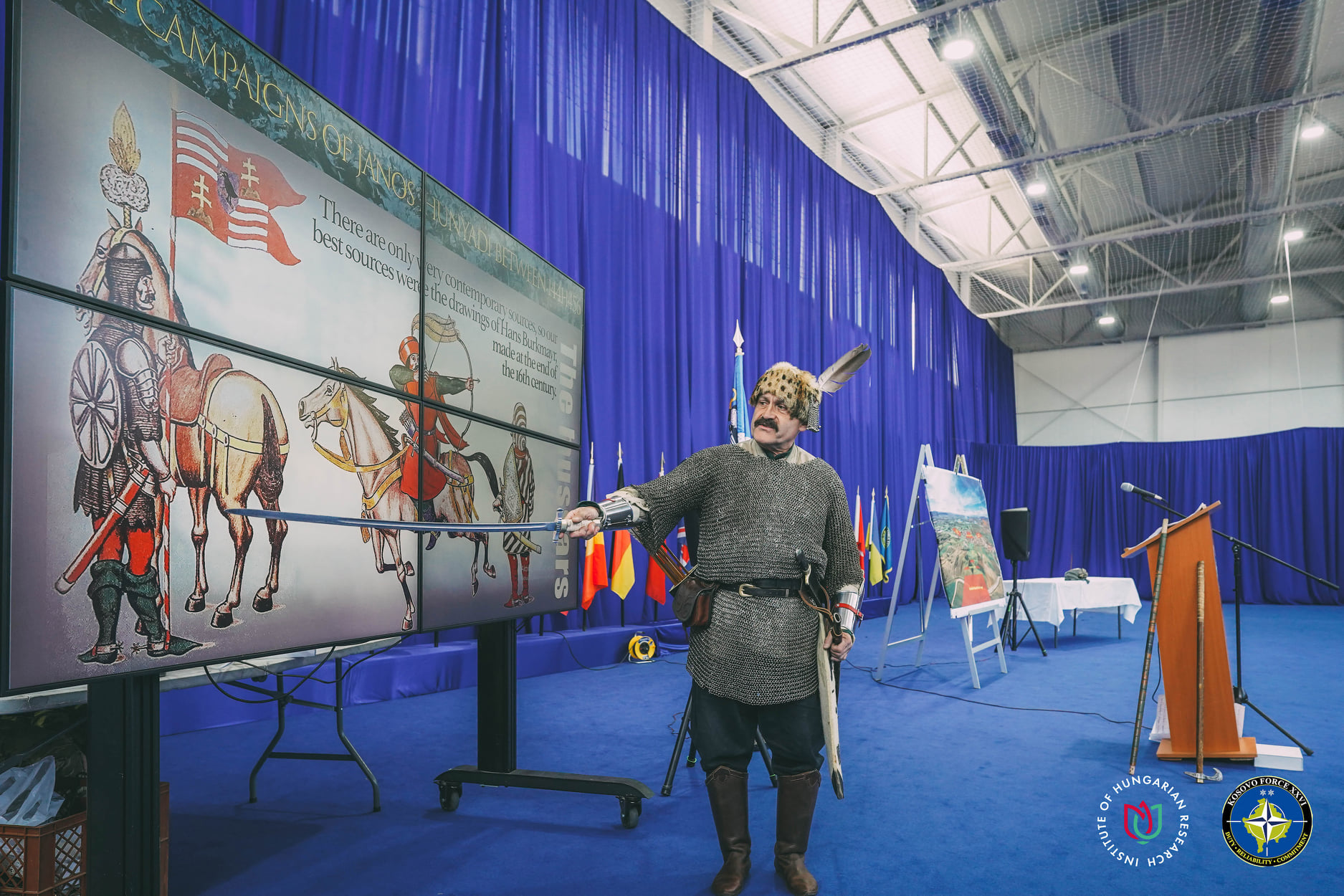The ancestors were present
"This is the debt we owe to János Hunyadi and to all the Hungarian heroes who died for the homeland, as well as to those who are still serving the homeland as soldiers today", Csaba László Hidán, our archaeologist-historian researcher, told daily Magyar Nemzet, when asked about how it felt to raise János Hunyadi's battle flag at the site of the Battle of Kosovo.
Major General Ferenc Kajári, Commander of the Kosovo Force (KFOR), the international force operating in Kosovo under NATO command, contacted Gábor Horváth-Lugossy, Director General of the Institute of Hungarian Research requesting his cooperation in order to promote the figure of János Hunyadi and the historical events of the Battle of Kosovo in 1448.
László Csaba Hidán assumed the task of holding the lecture for the multi-ethnic command and leadership unit of the force, and it was his idea to display the battle flag of János Hunyadi on the spot.

He gave a historical overview in the presence of soldiers from eighteen countries, which was of particular importance because it provided an opportunity to promote Hungarian military traditions internationally. According to the speaker, there was great interest from all nationalities. Even during lunch, the English commander-in-chief, who himself has a suit of armour, a bow and a saber, discussed Hungarian and English military traditions. The American paratroopers were very interested in the alternate use of the saber and the bow - we learned from László Csaba Hidán, who, according to his own account, found common ground with the professional soldiers in a short time, thanks to his military and military historian training, and a kind of comradely relationship developed between the lecturer and the soldiers.
He added that everyone is satisfied with the work of the Hungarian command, they find the Hungarian leadership accurate and reliable, and they respect our soldiers. At the site of the battle of Kosovo, the Hungarian Defence Forces provided an opportunity for field reconnaissance and research, which had never been done before. As a result, the battle site could be accurately mapped.
- “Based on the descriptions, we roughly knew where the Hungarian and Turkish troops were deployed, how the military manoeuvres took place, and with the help of modern military technology we were able to project all this onto the field, whereby the whole picture was logically pieced together.”
“We could clearly see where troops could attack from, where they could hide, and which parts were suitable for cavalry battles," said the archaeologist-historian, who also told us that both the Institute of Hungarian Research and the Hungarian Army are open to further cooperation.
László Csaba Hidán was born in Kolozsvár, Transylvania. He is an advocate of the authentic transfer of knowledge, at the same time imbued with national sentiments. He wears authentic reconstructions of costumes, equipment and weapons from the period - which he makes himself - and uses them during his lectures and combat demonstrations. His collection includes equipment from all periods, from the 895 conquest to 1956. Aware of his dedication, we were also keen to hear how he experienced in his heart the moment when he raised the battle flag of one of the most outstanding figures in Hungarian and universal military history, the legendary Turkish-beating Hungarian general, on the hill where the former camp of Sultan Murad II stood.

- “My mother is a 90-year-old Hungarian woman from Transylvania. When I told her that I was going to raise Hunyadi's flag, her eyes welled up with tears”, he said. Then shared his own inner experience that as he was marching in full armour towards the hilltop where the Sultan's tent had stood, he felt that "the ancestors were there" and felt a sense of complete peace.
János Hunyadi dedicated his whole life to fighting the Ottoman armies, to defending his homeland, which at the time meant defending the whole of Europe without their help. In the days of war with the Turks, the valiant opponents still respected each other. John Hunyadi was even mourned by Mehmed II. According to János Thuróczi's chronicle, when the Sultan was informed of the death of the Hungarian general, he kept his head bowed for a long time. György Szondi was given a decent burial by Ali Pasha, who occupied the castle of Drégely, and a wooden headstone and flag were placed at his grave.
- "We even took a photo with a Turkish soldier on the spot, but we did not experience any hostility," said the speaker, who recounted the outcome of the battle and the use of weapons with historical fidelity, paying tribute to the old warriors.